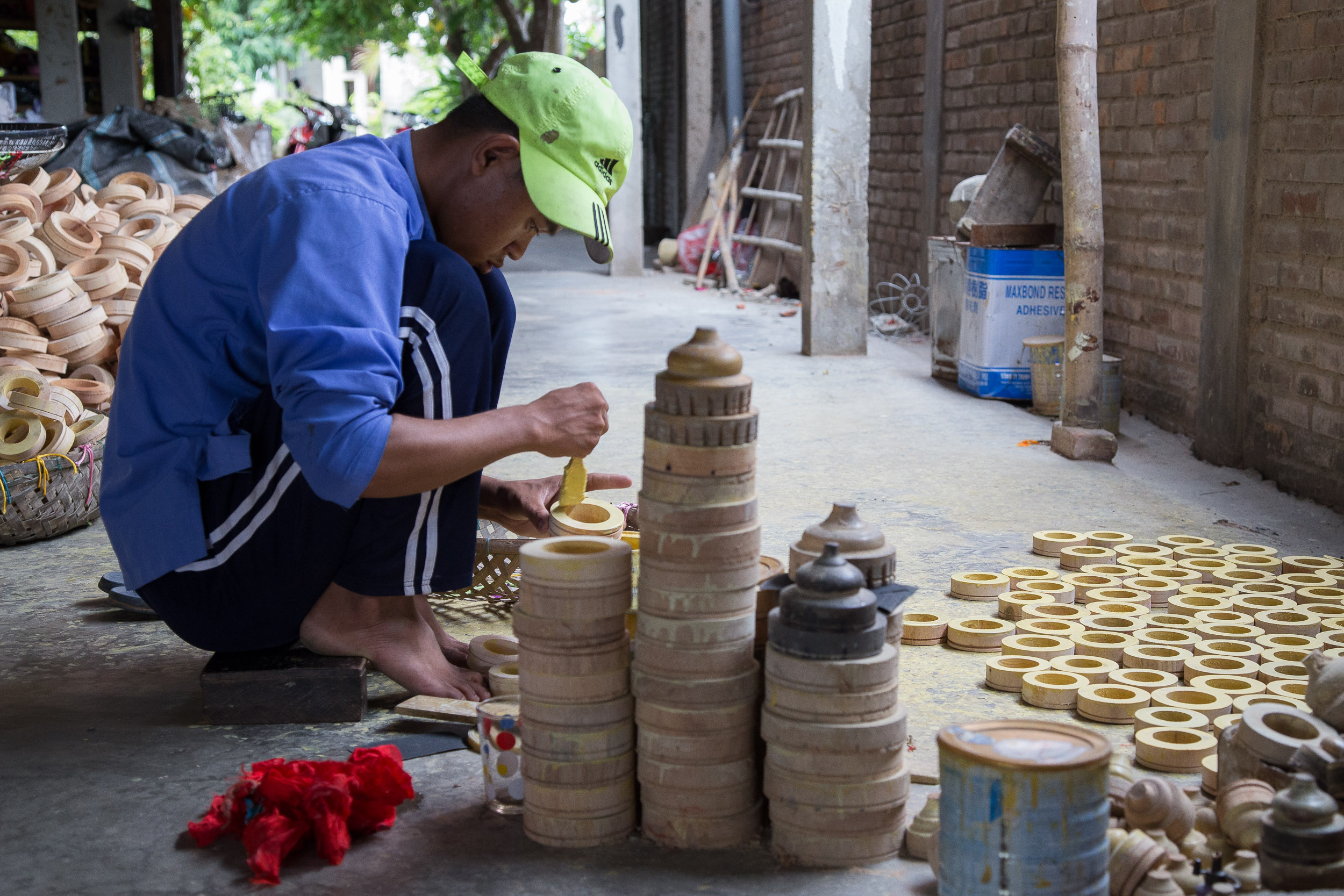lanterns of hoi an

Ask anyone who has spent time in Hoi An, the popular UNESCO World Heritage former trading village roughly in the middle of Vietnam’s sprawling coastline, and they’ll likely give you recommendations for three things: best restaurant, best tailor and best lantern shop. When we arrived three weeks ago I thought I was interested only in the former. But then a neighbour from Melbourne messaged us with a challenge. A keen collector (let’s be honest, borderline-hoarder), she dreamt of turning her home office into a colourful lantern menagerie. Could we help her do that, she asked?
So, equipped with a budget of between AUD$100-200, we dove in to the world of Vietnamese silk lantern importing.
Silk lanterns decorating the streets of Hoi An's Old Town are beautiful by day and even more striking at night.
Silk lanterns are everywhere in Hoi An. They are probably a legacy of the use of Hoi An as a Chinese and Japanese trading port from the 15th to the 19th centuries. Some locals will tell you they hang them in front of their homes to bring health, happiness and good luck. In truth, it’s just a good story to tell the steady stream of cashed-up tourists.
Our first stop was An Hoi, the small island attached to Hoi An’s Old Town via a couple of foot bridges. With its many night market stalls and mini ride-your-own cyclo rentals, it’s become a popular destination for visitors, who spill over from their evening stroll through the old town. Here you’ll also find several lantern stalls, each stocking suspiciously similar products. We began investigating prices and listened to each stall holder’s pitches – one invited us back to his factory and promised to provide us with a ‘fumigation certificate’, supposedly to satisfy Australia’s notoriously strict customs regulations.
Lanterns really bring Hoi An's old town to life at night.
In the end we took some advice from Bao, our ever-helpful host at Palm View Villas, and went to Hoi An’s largest lantern factory, Ha Linh. It took some finding (extra hard work toting our two-year-old and seven-year-old on the bike), but I eventually found the place tucked away off the beaten track, surrounded by rice paddies and farmland.
A worker constructing bamboo lantern frames at Hoi An's largest lantern factory, Ha Linh.
Inside we found about a dozen workers, busy at various stations. Some were constructing the bamboo skeletons, another was cutting grooves into the wooden discs that hold the structure together at the top and bottom, others were keeping an eye on daytime tv while they glued strips of colourful silk onto the frames. Each month, we are told, Ha Linh lantern factory makes more than 5,000 units. I negotiated some prices with the lady who ran the store and then said we’d shop around.
Vietnamese soap operas provide some relief from the repetition of lantern construction at Ha Linh lantern factory, Hoi An.
A few days later we returned but my negotiation skills were poor and we couldn’t secure a further discount. We ended up spending 1,500,000 Vietnamese Dong (AUD $90) on 20 lanterns in three sizes. We also took the opportunity to do a lantern making class with the children (70,000 Vietnamese Dong or AUD $4.20 for each person, including a small lantern to take home at the end). It was a sticky, whiffy business and clearly there is a lot of skill in making flawless-looking end products but I can thoroughly recommend giving it a go.
Make-your-own lantern classes at Ha Linh lantern factory in Hoi An cost 70,000 Vietnamese Dong or AUD$4.20 per person, including a small lantern to take home at the end.
We left the factory with our box of flattened lanterns (like umbrellas, they pack down to a manageable shape) just as the afternoon rains hit.
The next hurdle was to send the lanterns back to Australia. Sea mail? Air mail? Courier? To cut a long story short, the post office in Hoi An offers sea or air mail (a DHL depot in Da Nang provided a quote over the phone that was way over our budget). Air mail proved to be too expensive so we settled for sea mail: three boxes, each less than 7kg, cost $140.
So, as I write this, the lanterns are slowly chugging their way back to Australia and will arrive in time (we hope) for summer. The final cost was $230 ($30 over budget) but hopefully they will provide a colourful and evocative slice of Hoi An in inner city Melbourne for many years to come.
The lanterns of Hoi An really come to life when the sun goes down.












